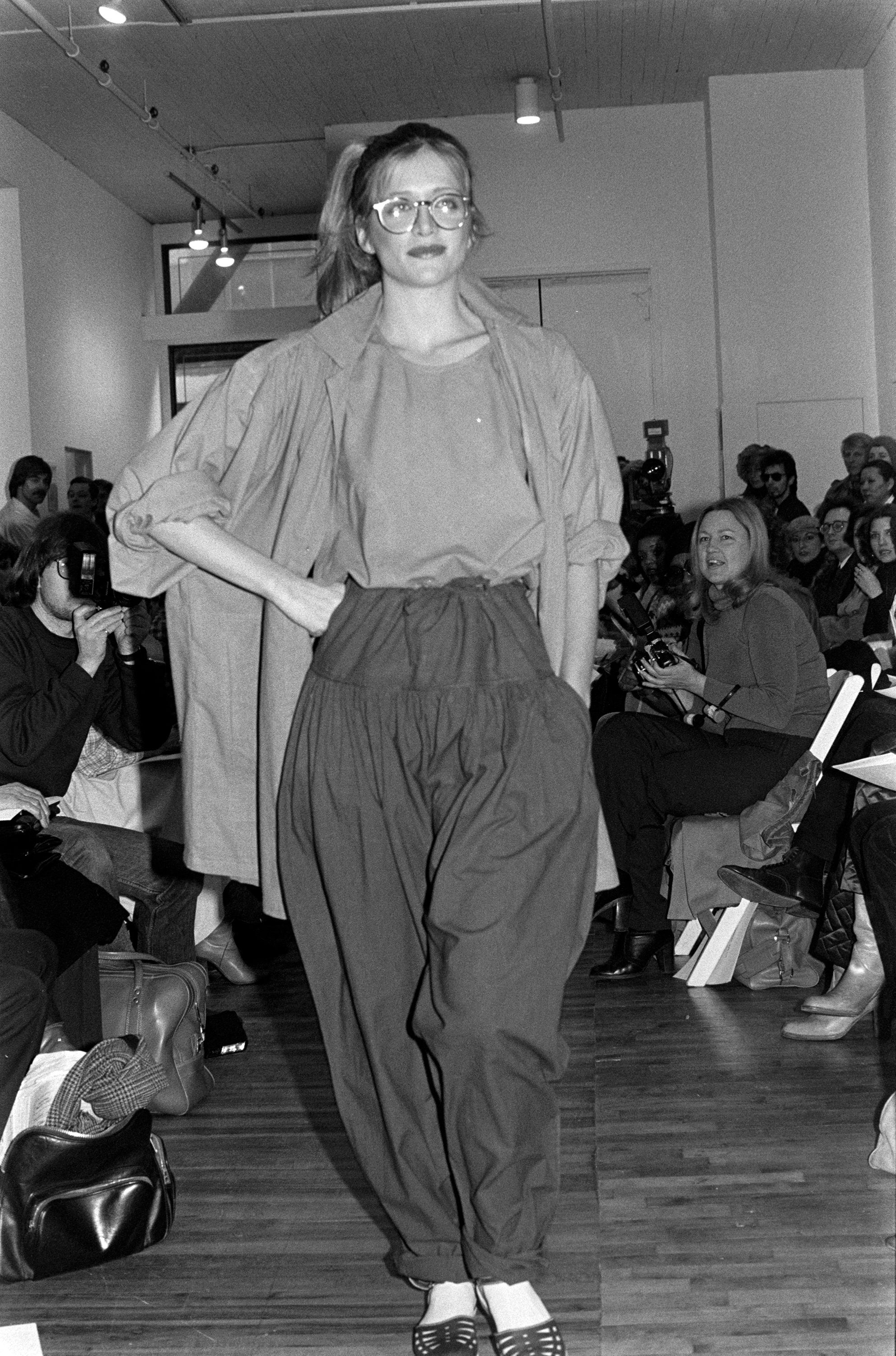Veronica Jones
Willi Smith and I met in the early seventies when he was a clothing designer for Digits. At the time, I was an assistant buyer in junior sportswear at Abraham & Straus, a federated department store in Brooklyn, New York. Willi’s paper-bag pants and high-waist pleated trousers were a retail phenomenon. He revolutionized the pant industry with his signature style, and became a creative force in the junior sportswear market, gaining recognition as a bankable designer. Willi’s favorite colors were ketchup, mustard, and mayonnaise. The garment industry fell in love with him.
At the time, department stores were integral in building brand awareness for companies and designers. Bernie Ozer was the fashion director for Associated Merchandising Corporation, a fashion buying office for Federated Department Stores. He championed Willi’s career early on in the fashion shows he presented to the stores. Bernie is even rumored to have been the one who coined Willi’s designs as “street couture.” Bloomingdale’s became a mecca when it launched the Saturday’s Generation psychedelic lounge designed by Barbara D’Arcy to attract young trend-seeking shoppers, so when an in-store WilliWear boutique opened to sell Willi’s innovative, whimsical, and street-chic designs, the market took notice. Willi quickly became a frontrunner in the emerging contemporary designer market alongside Stephen Burrows, Betsey Johnson, Norma Kamali, 52 Bond Street by Toma Holley, Jag Jeans, ABS by Allen Schwartz, and Cathy Hardwick.
The impact of Black designers in the seventies is legendary. A Black fashion network evolved in every phase of the fashion business, supported greatly by the Johnson Publishing Company’s enterprises. The Ebony Fashion Fair took clothing by Black designers down runways around the country, even when the industry wouldn’t, and magazines like Essence played a major role in elevating Black designers and championing models like Toukie Smith, Pat Cleveland, and Iman, who became the face of “Polished Ambers,” Revlon’s cosmetics line for Black women. We became a force to be reckoned with. Black Is Beautiful and always fashionable!
 Willi Smith for WilliWear, Fall 1978 Presentation, 1978
Willi Smith for WilliWear, Fall 1978 Presentation, 1978
